#haitian photographer
Photo
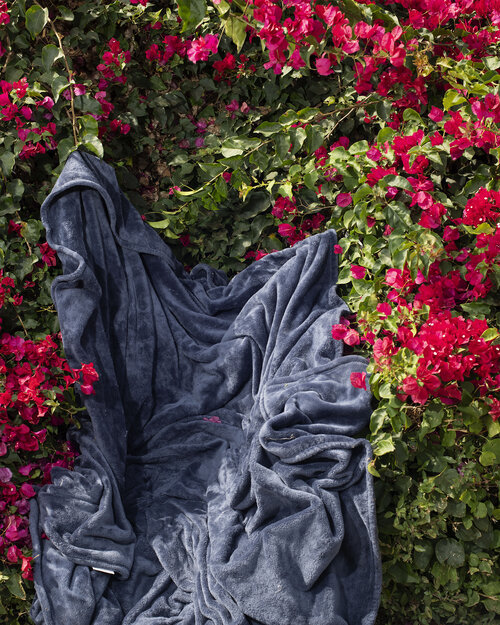
Bougenvilye, ki itilize pou Bote, Vi Prive sou Liy Kloti, ak pwoteksyon Pikan (Bougainvillea, Used for Beauty, Privacy on Fence Lines, and Thorny Protection) 2019 - Widline Cadet.
88 notes
·
View notes
Text

Daniel Morel shoots a photo of 66-year-old Maltide Derine as a crowd of people watch. “Document of Disaster”.
7 notes
·
View notes
Text

Miami, Florida
#dieselsoakedphotography#photographieobsidian17#photography#photographers on tumblr#street photography#shotoniphone#iphone photos#iphone photography#miami#florida#haiti#haitian
14 notes
·
View notes
Text

from Leah Gordon's "Kanaval in Haiti" series // 2000s
#op#leah gordon#black and white photography#kanaval#haitian photographers#haitian artists#haitian art#haitian carnival#skeleton#street photography#street portrait#dark art
17 notes
·
View notes
Text
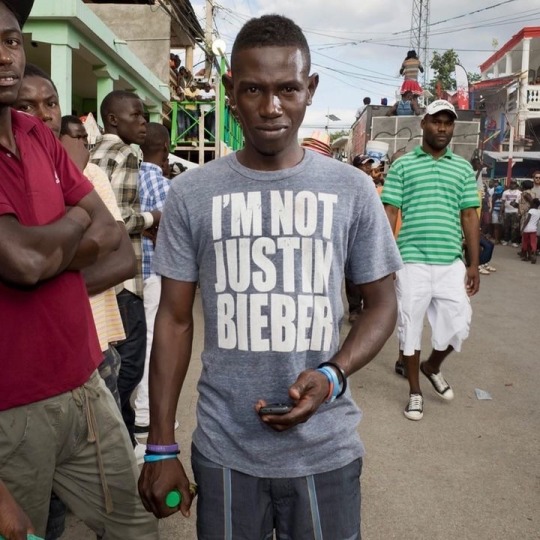
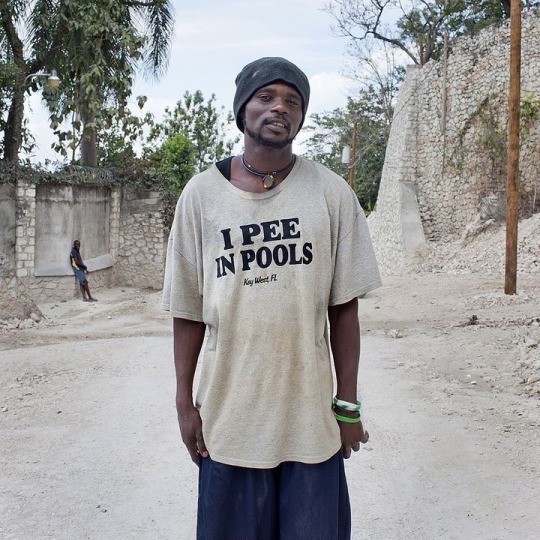


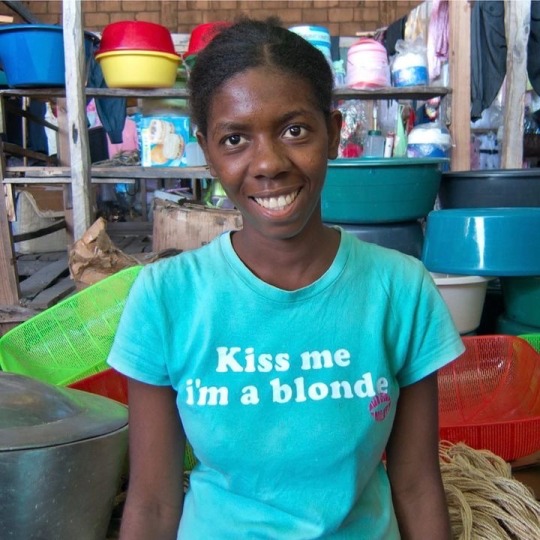
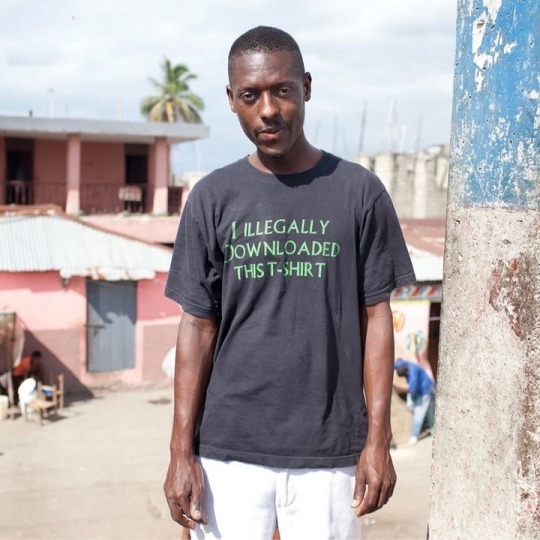

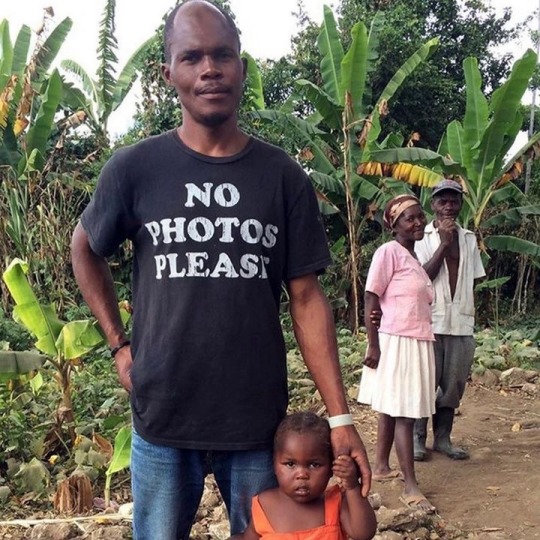

artneversleeps Haitian Villagers Photographed Wearing Donated “Slogan' Tees from America by Paolo Woods
The fashion industry produces 92 million tons of discarded fabric each year. We’re able to grasp a rough understanding of a t-shirt's life cycle, from manufacturer to landfill.
While the majority of textile waste fails to encounter a preceding owner, few rays of hope glisten in second-hand shops and complex recycling processes. Often successful, chains like Value Village manage to breathe new life into pre-loved items, selling cheap, accessible alternatives to brand-new goods. This method is effective, but far from perfect, prompting international agreements akin to Haiti's very own 'Pèpè' trade. In the city of Port au Prince, the country's waterfront capital, lies a market known as 'Croix-des-Bossales'. A place that houses millions of pounds of America's most outrageous, unwanted clothing.
Here, it's nearly impossible to stumble across anything purchased outside of the Western world, constantly importing undesirable graphics that just simply didn't sell.
Arriving in massive bails, the garments are often sold for less than a dime, which in an impoverished market, allows local citizens to wear quality clothing at a cheap price. On the surface, this idea appears as a great small-scale solution for our global textile crisis, but has ultimately created some larger economic issues.
As the markets become saturated, tailors are forced out of business, and more ironically, the majority of these items are being produced in Haiti's local sweatshops prior toexport. On top of that, those wearing the clothes are unaware of each slogan, speaking Creole as a native dillect.
Words by @archivethreads
Soundtrack: Europe Is Lost by Kae Tempest @wetwicksdry
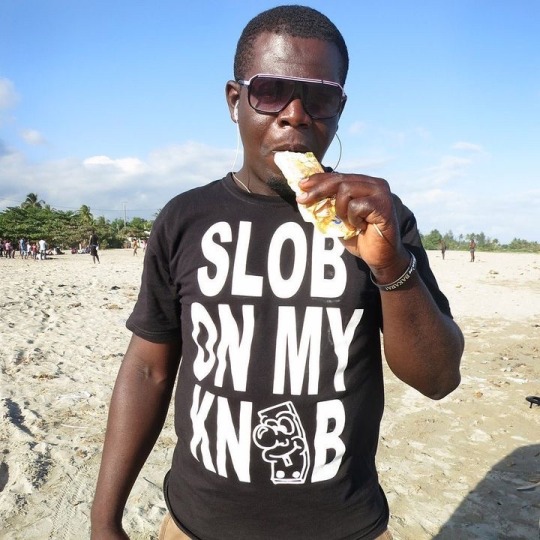
#Paolo Woods#Wearing#Photographed#12/2022#Villagers#Haitian#fashion#qotd#quoteoftheday#tshirt#Tshirt humor#dirty humor#political#photo journalism#x-heesy#fucking favorite#now playing#music and art#contemporaryart#archivethreads#kae tempest#black is beautiful
44 notes
·
View notes
Text
Tap the link 📍on my pinned profile post ! 🍓
ⓒchocolatebunnysenpa1
#sexy content#18+ post#18+ content#18+ only#18+ blog#sexy tease#sexy breast#natural body#instagram#spicy content#content creator#hi hello#chocolate bunny#haitian#louisiana creole#photographers on tumblr#centerfold#linkinbio#follow me on instagram
2 notes
·
View notes
Text
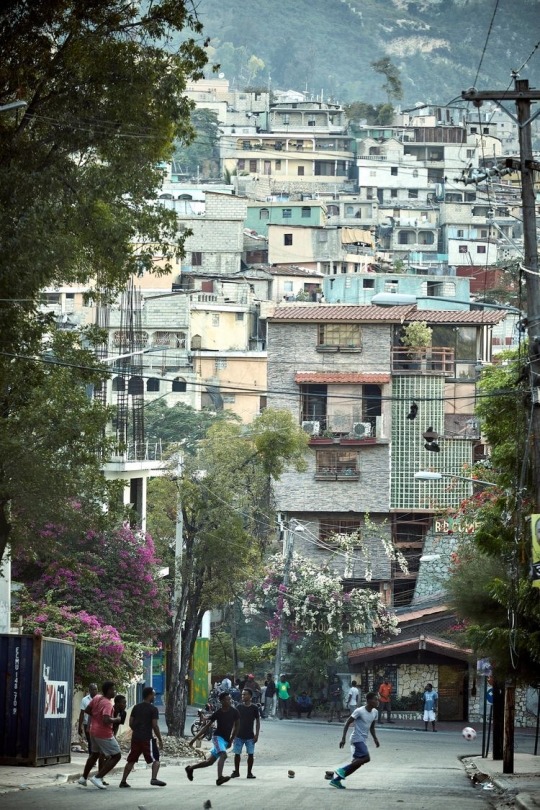
Fun to live in Haiti
#tumblr#tumblr staff#anonymous#pictures#beautiful#photography#photo#photographers on tumblr#precious#people#black people#black men#blacklivesmatter#haitian#haiti#haitienne#men#beautiful men#tree#trees#friendship#friends#everyone#country#building#places#tall buildings#fun#enjoyable#happylife
37 notes
·
View notes
Text


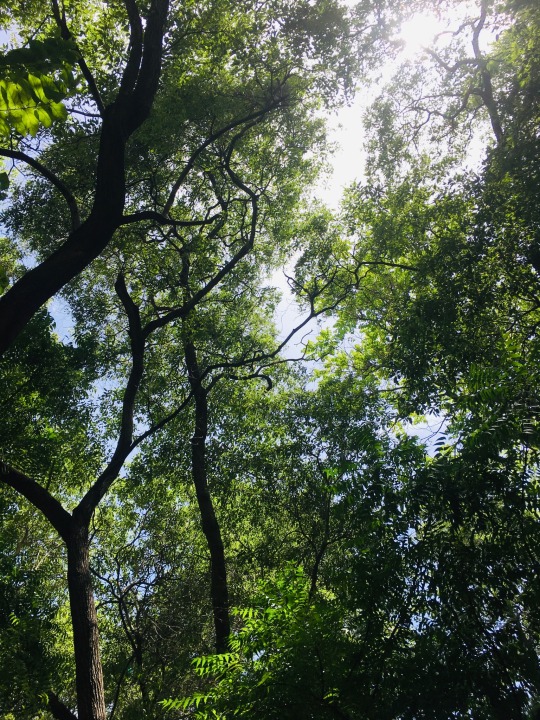
#haitian#tumblr fyp#creole#photography#nature#arbres#trees#forest#calm aesthetic#keep calm#beauty#art#photographers on tumblr#beautiful photos#fypシ゚viral#fyp2023#barbie 2023#august#black history month
4 notes
·
View notes
Text

5 notes
·
View notes
Text
REVIEW: The Best Man’s Problem by Sera Taíno
REVIEW: The Best Man’s Problem by Sera Taíno from @HarlequinBooks || #Diversity #MMRomance #NewBooks #Romance
His sister’s wedding isn’t the ideal place for Rafael Navarro to reconnect with the man he kissed in a moment of reckless abandon. But it’s impossible to avoid best man Étienne Galois! The gorgeous Haitian photographer hasn’t forgotten the intimate moment they shared, even if Rafi is the most maddening person he’s ever met. Can the two find common ground, proving opposites not only…

View On WordPress
#2023#2023 reviews#Best Man#book#book lover#book review#Book Reviews#Books#Carribean#diversity#Haitian#harlequin#Jacmel#Latinx#new books#Opposites attract#photographer#reviews#Sera Taíno#teacher#The Best Man&039;s Problem#Wedding#wedding party romance
1 note
·
View note
Photo
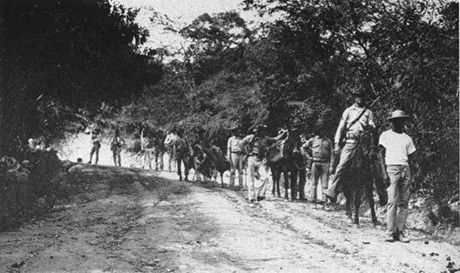
On this day, 28 July 1915, the United States invaded Haiti, crushing opposition and setting up a dictatorship which governed the country for the next 19 years. US Secretary of State Robert Lansing claimed the invasion was necessary to end "anarchy, savagery and oppression" in Haiti, and claimed that "the African race are devoid of any capacity for political organisation." The government had been lobbied for some time by US banking interests to occupy Haiti to assert US financial dominance as opposed to dominance by the financial institutions of the French former colonial power. In the years of occupation, the US forcibly dissolved parliament, killed thousands of people – and posed for photographs with their corpses – as well as siphoning wealth from the country. They also tied people up with ropes and forced them to work for no pay, killing people who attempted to flee. US authorities installed a puppet leader, Louis Borno, who admired fascist dictator Benito Mussolini, and had him take out a loan from the National City Bank, the forerunner of Citigroup. Around a quarter of Haiti's revenues then went towards paying for this loan. The measures left Haitian farmers "close to starvation level", according to the United Nations. While formal US colonial occupation ended in 1934, US retained neocolonial financial control of the country through the remaining debt until 1947. Reflecting on his role in the events, US Major General Smedley Butler stated that he "helped make Haiti and Cuba a decent place for the National City Bank boys to collect revenues," and described himself as a "racketeer for capitalism." More information, sources and map: https://stories.workingclasshistory.com/article/10016/us-invasion-of-haiti https://www.facebook.com/photo.php?fbid=668997001940185&set=a.602588028581083&type=3
495 notes
·
View notes
Text



3 notes
·
View notes
Text
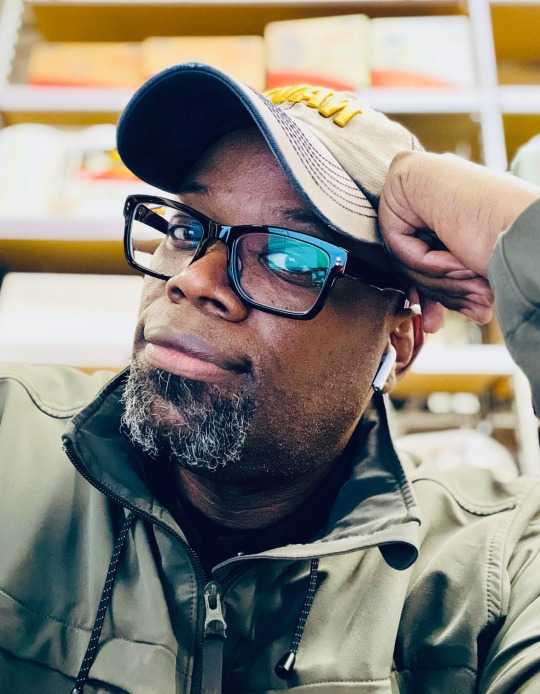
(Self Portrait)
#dieselsoakedphotography#photographieobsidian17#photographers on tumblr#self portrait#glasses#haitian
1 note
·
View note
Text
So you want to learn about Louisiana Voodoo…

door in New Orleans by Jean-Marcel St. Jacques
For better or worse (almost always downright wrong) Louisiana Voodoo and Hoodoo are likely to come up in any depiction of the state of Louisiana. I’ve created a list of works on contemporary and historical Voodoo/Hoodoo for anyone who’d like to learn more about what this tradition is and is not (hint: it developed separately from Haitian Vodou which is its own thing) or would like to depict it in a non-stereotypical way. I’ve listed them in chronological order. Please keep a few things in mind. Almost all sources presented unfortunately have their biases. As ethnographies Hurston’s work no longer represent best practices in Anthropology and has been suspected of embellishment and sensationalism on this topic. Additionally the portrayal is of the religion as it was nearly 100 years ago- all traditions change over time. Likewise Teish is extremely valuable for providing an inside view into the practice but certain views, as on Ancient Egypt, may be offensive now. I have chosen to include the non-academic works by Alvarado and Filan for the research on historical Voodoo they did with regards to the Federal Writer’s Project that is not readily accessible, HOWEVER, this is NOT a guide to teach you to practice this closed tradition, and again some of the opinions are suspect- DO NOT use sage, which is part of Native practice and destroys local environments. I do not support every view expressed but think even when wrong these sources present something to be learned about the way we treat culture
*Start with Osbey, the shortest of the works. To compare Louisiana Voodoo with other traditions see the chapter on Haitian Vodou in Creole Religions of the Caribbean by Olmos and Paravinsi-Gebert. Additionally many songs and chants were originally in Louisiana Creole (different from the Louisiana French dialect), which is now severely endangered. You can study the language in Ti Liv Kreyol by Guillery-Chatman et. Al.
Le Petit Albert by Albertus Parvus Lucius (1706) grimoire widely circulated in France in the 18th century, brought to the colony & significantly impacted Hoodoo
Mules and Men by Zora Neale Hurston (1935)
Spirit World-Photographs & Journal: Pattern in the Expressive Folk Culture of Afro-American New Orleans by Michael P. Smith (1984)
Jambalaya: The Natural Woman's Book of Personal Charms and Practical Rituals by Luisah Teish (1985)
Eve’s Bayou (1997), film
Spiritual Merchants: Religion, Magic, and Commerce by Carolyn Morrow Long (2001)
A New Orleans Voodoo Priestess: The Legend and Reality of Marie Laveau by Carolyn Morrow Long (2006)
“Yoruba Influences on Haitian Vodou and New Orleans Voodoo” by Ina J. Fandrich (2007)
The New Orleans Voodoo Handbook by Kenaz Filan (2011)
“Why We Can’t Talk To You About Voodoo” by Brenda Marie Osbey (2011)
Mojo Workin': The Old African American Hoodoo System by Katrina Hazzard-Donald (2013)
The Tomb of Marie Laveau In St. Louis Cemetery No. 1 by Carolyn Morrow Long (2016)
Lemonade, visual album by Beyonce (2016)
How to Make Lemonade, book by Beyonce (2016)
“Work the Root: Black Feminism, Hoodoo Love Rituals, and Practices of Freedom” by Lyndsey Stewart (2017)
The Lemonade Reader edited by Kinitra D. Brooks and Kameelah L. Martin (2019)
The Magic of Marie Laveau by Denise Alvarado (2020)
In Our Mother’s Gardens (2021), documentary on Netflix, around 1 hour mark traditional offering to the ancestors by Dr. Zauditu-Selassie
“Playing the Bamboula” rhythm for honoring ancestors associated with historical Voodoo
Voodoo and Power: The Politics of Religion in New Orleans 1880-1940 by Kodi A. Roberts (2023)
The Marie Laveau Grimoire by Denise Alvarado (2024)
Voodoo: An African American Religion by Jeffrey E. Anderson (2024)
#I’ll continue to update as I find more sources#Please be respectful of other people’s religion#Louisiana Voodoo#Louisiana Hoodoo#In the case of authors behind a paywall or whom you do not wish to support I highly recommend your local library#I do not support every view but think even when wrong they present something to be learned about the way we treat culture#Voodoo#Hoodoo#conjure#rootwork#Books
34 notes
·
View notes
Text


Fabiola Jean-Louis, "Rewriting History." Left, Marie Antoinette is Dead. Right, Madame Leroy.
Haitian sculptor, painter, and photographer Fabiola Jean-Louis uses various techniques to imitate classical paintings, but with black women as the subject. Her work is exceptionally intricate, involving dresses entirely made of paper (see Marie Antoinette is Dead) and hand-crafted props and backdrops.
#Fabiola Jean-Louis#Rewriting History#Black Art Matters#Photography#female artists#Classical Art#Art history
7 notes
·
View notes
Text
Haitian Asylum Seekers Take Biden Admin to Court for Racial Discrimination, Rights Violations
youtube
A federal court in Washington, D.C., heard arguments Thursday in a lawsuit accusing the Biden administration of racial discrimination and rights violations of Haitian asylum seekers. The suit was brought on behalf of 11 Haitian asylum seekers who were abused by U.S. border agents as more than 15,000 people, mostly from Haiti, were forced to stay in a makeshift border encampment on the banks of the Rio Grande near the Acuña-Del Rio International Bridge in Texas. One of the plaintiffs is Mirard Joseph, the asylum seeker whose image went viral after being photographed while a Border Patrol agent on horseback lashed him with split reins, grabbed his neck and gripped Joseph by the shirt collar. “This is a critical junction in our country here in the United States as we make sure to uphold human rights and understanding seeking asylum is a human right,” says Guerline Jozef, executive director of immigrant advocacy organization Haitian Bridge Alliance, which helped bring the case on behalf of asylum seekers. “We will continue to push forward and make sure that accountability is served but also we have systematic change in the way that we receive people in the United States.”
Transcript:
4 notes
·
View notes